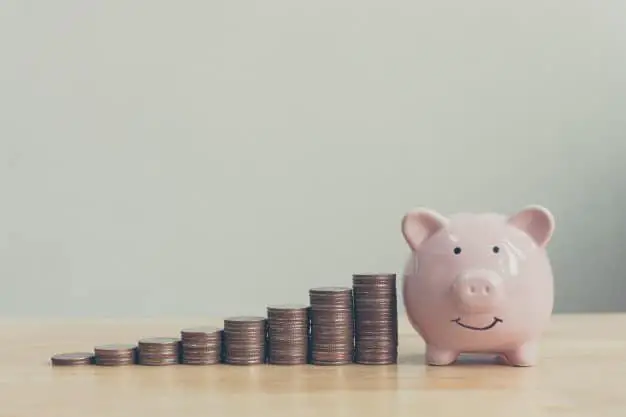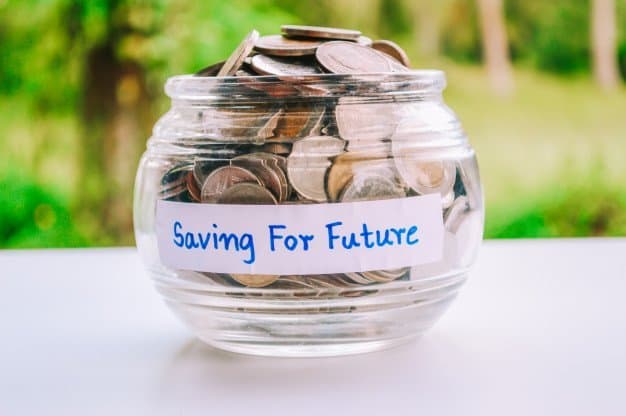Life happens. You get laid off from work, or you get hit with a whole lot more expenses compared to before.
Can you absorb those expenses or is it time to freak out?
Setting up your emergency fund is the most important thing you could do to have some peace of mind when things go down.
And it’s not IF, it’s a matter of when something wrong can happen. It happens to us all.
How much should I have saved?

I’m not going to share a bunch of statistics here, just my thoughts. I think you should keep setting money aside every month until you get to the grand goal of 1 year worth of monthly expenses saved.
Just imagine that!
If you need $5,000 a month to cover ALL your monthly obligations (mortgage, food, phone, gas, car bill, etc.) then your 1-year goal is $60,000.
That number sounds crazy, but this is not a goal with a deadline, just plan to save 5% to 10% of your monthly income towards this emergency fund goal.
After a few months, not only will you not miss that small percent of your income allocated to an important goal, but you’ll also see your emergency savings fund increasing.
Set celebration milestones. Maybe do it every time you have another month’s worth of funding saved.
This is such an important goal that will make you so happy and stress-free once achieved.
If life happens and you can only have 5 months’ worth of emergency fund for the next year or so, that’s still 5 whole months of buffer you built up.
Just get going, and aim to get 1 year’s worth saved, enjoy the journey. You’re building your personal finance muscles already by planning for it!
Help me figure out what my expenses could be

Here’s a list of the most common expenses you might have every month.
Really take some time here, write your own list, and then look at it again tomorrow to see if you missed anything.
Tip: I always have a small buffer of 5% that I add to my monthly savings goal if I missed anything or something comes up. So if my monthly goal is $2,000, I just make it $2,100.
- Mortgage/rent
- Utilities
- Phone bills
- Food
- Gas
- Car bills
- Daycare
- Kids obligations (you’d know the number here)
So what do I do after I have enough saved?
So you hit the grand 1-year mark, once you get here you really need a big celebration.
Very few people have 1 year’s worth of emergency funding saved. It’s a true achievement!
The simple answer here is that once you have your 1-year emergency fund completed, you now switch gears to create new goals.
This would most likely be funding your retirement goals (ROTH IRA or 401k) or creating new savings goals (new home or new car).
I notice that sometimes it’s not the fact that you don’t make enough money, but that you didn’t get creative with your money to start your emergency fund savings goals.
Now that you passed the 1-year mark, you’ve gotten the hang of things.
Want a new car? Create a plan to save up for the down payment. If you want to go one step further, make another plan to save up for 3 months’ worth of car payments before you buy the car.
What about a new house? These days banks love giving you a loan for 95% if not 100% of the loan. Why not, they’ll make a ton more money off you that way.
Why not make it work better for you by saving 20% or more for the down payment? You won’t get hit with fees like PMI, and your mortgage cost will also be a lot lower (since you owe the bank less).
I love delayed gratification.
It’s like a game, and working on delayed gratification when getting nice things is like working out my personal finance muscles.
We all like nice things. Just take your time in getting whatever it is you want. Make a plan to get it.
The worst thing you can do is to get it all at the same time, and have an overloaded monthly burden.
How this emergency fund will help you throughout life
As you get older, and life changes, you’ll need to go back and update your monthly expenses number.
Remember that the ultimate goal is to have 1 year saved.
And that’s all based on what your monthly expenses are, and saving up 12 months worth.
If your monthly expenses were $2,000 when you were 25, and they’re now $3,500 at 30, then you need to update your numbers.
When you thought you had 6 months of funding saved, you might only have over 3 now.
You’ll also have to take money out of this fund because well, emergencies happen.
That’s what the fund is for.
So that’s why it’s even more important to have a document to reference over time.
Make sure your monthly expenses are reviewed and updated often.
What do I do now?
Get my free emergency savings fund planner here. Start writing down all the expenses you’d have any given month, all of them.
Then start saving up for them. First for 1 month, then for 3, in some time you’ll get to your grand goal of 1 year of emergency saving, and you will feel amazing.

